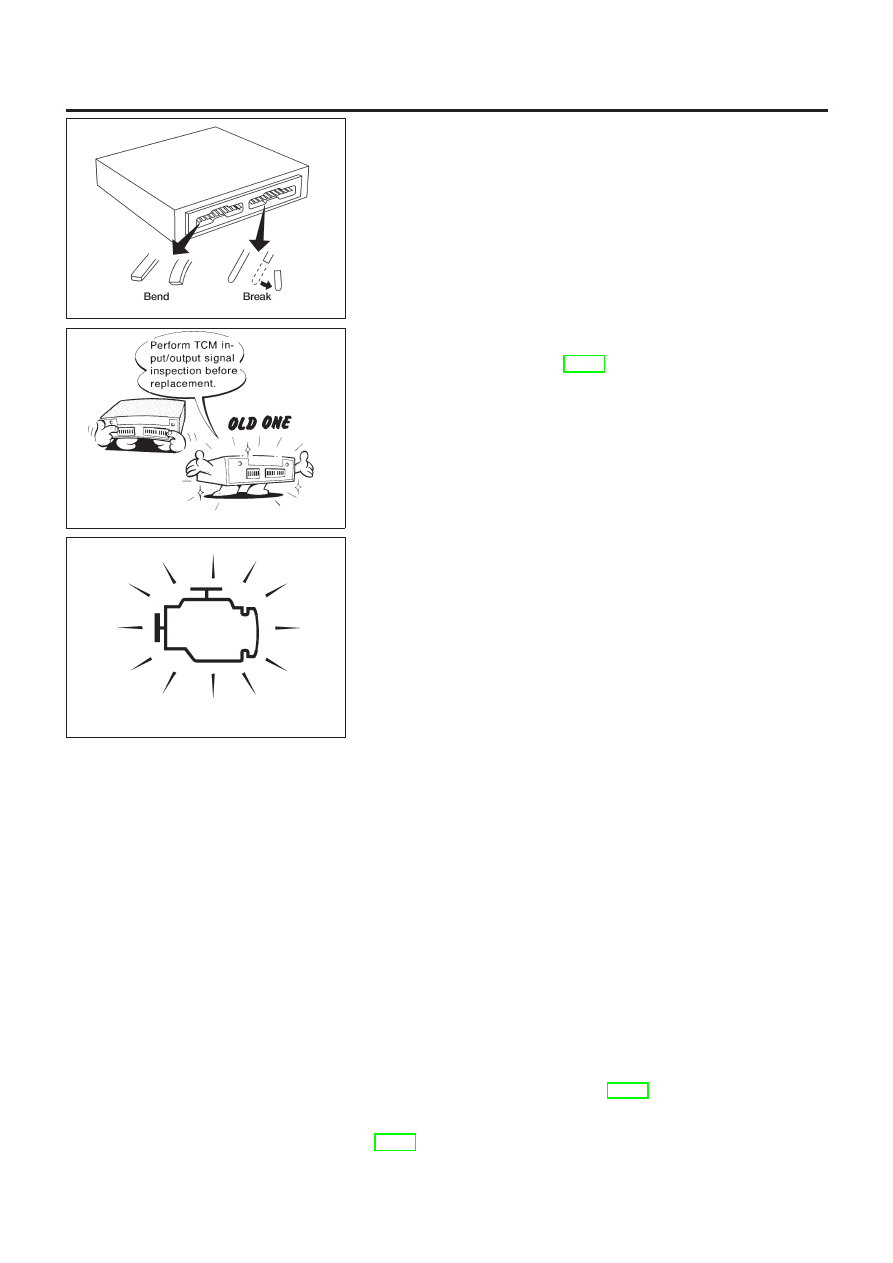Nissan Almera Tino V10 (2001 year). Manual - part 3

AAT470A
+
When connecting or disconnecting pin connectors into or
from TCM, take care not to damage pin terminals (bend or
break).
Make sure that there are not any bends or breaks on TCM
pin terminal, when connecting pin connectors.
MEF040DA
+
Before replacing TCM, perform TCM input/output signal
inspection and make sure whether TCM functions prop-
erly or not. (See page AT-58.)
SAT652J
+
After performing each TROUBLE DIAGNOSIS, perform
“DTC (Diagnostic Trouble Code) CONFIRMATION PROCE-
DURE”.
The DTC should not be displayed in the “DTC CONFIRMA-
TION PROCEDURE” if the repair is completed.
+
It is very important to perform functional tests whenever they
are indicated.
+
Extreme care should be taken to avoid damage to O-rings,
seals and gaskets when assembling.
+
When the CVT drain plug is removed, only some of the fluid is
drained. Old CVT fluid will remain in torque converter and CVT
fluid cooling system.
Always follow the procedures under “Changing CVT Fluid” in
the MA section when changing CVT fluid.
Service Notice or Precautions
NLAT0004
FAIL-SAFE
NLAT0004S01
The TCM has an electronic Fail-Safe (limp home mode). This allows the vehicle to be driven even if a major
electrical input/output device circuit is damaged.
Under Fail-Safe, the vehicle always runs even with a shift lever position of “L” or “D”. The customer may com-
plain of sluggish or poor acceleration.
When the ignition key is turned “ON” following Fail-Safe operation, SPORT indicator lamp blinks for about 8
seconds. [For “TCM SELF-DIAGNOSTIC PROCEDURE (No Tools)”, refer to AT-28.]
The blinking of the SPORT indicator lamp for about 8 seconds will appear only once and be cleared. The cus-
tomer may resume normal driving conditions.
Always follow the “WORK FLOW” (Refer to AT-44).
PRECAUTIONS
Precautions (Cont’d)
AT-7